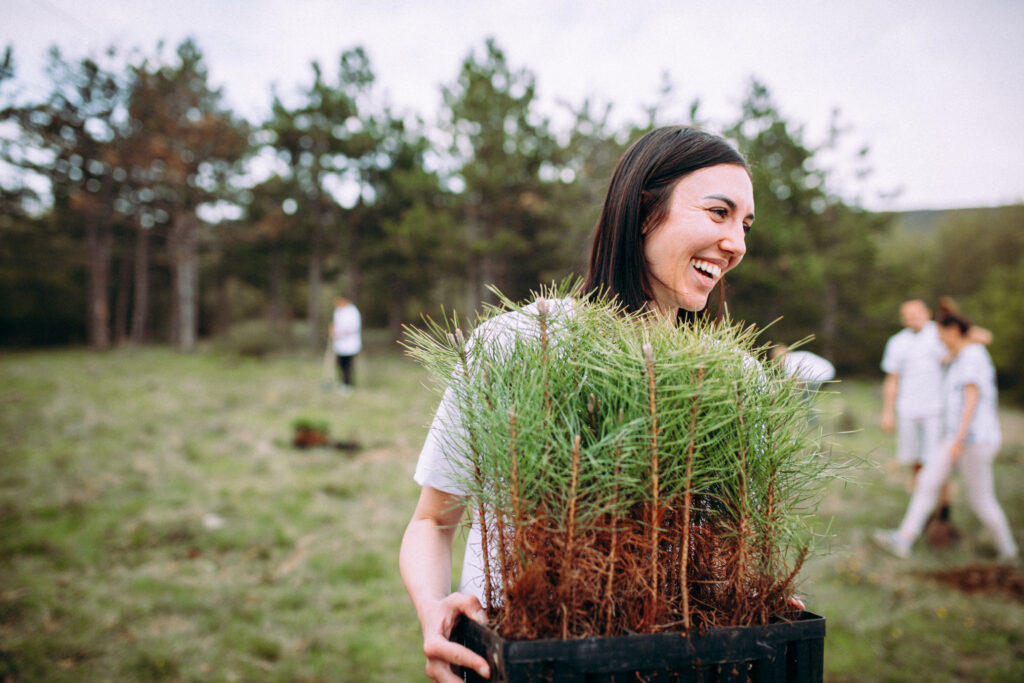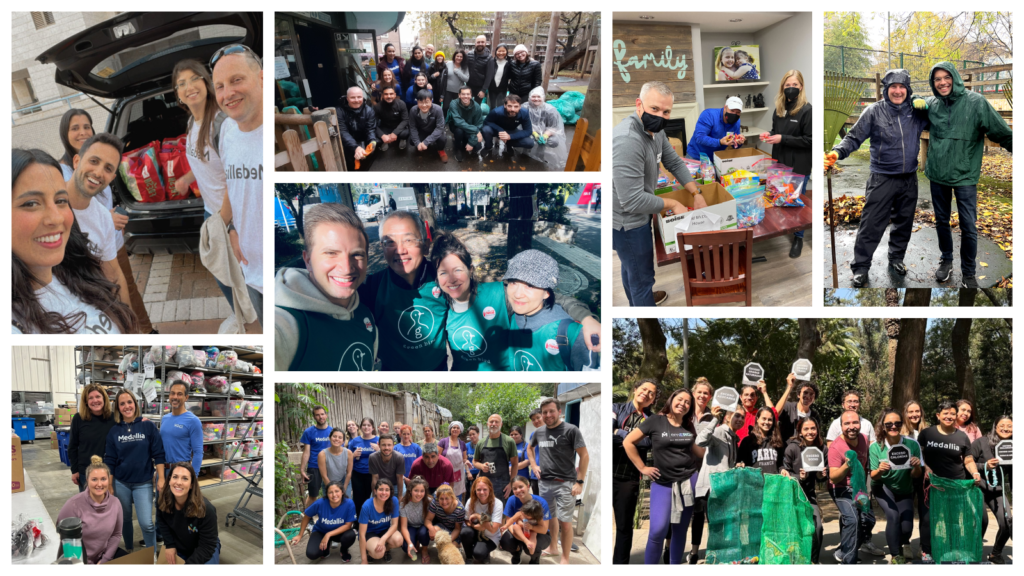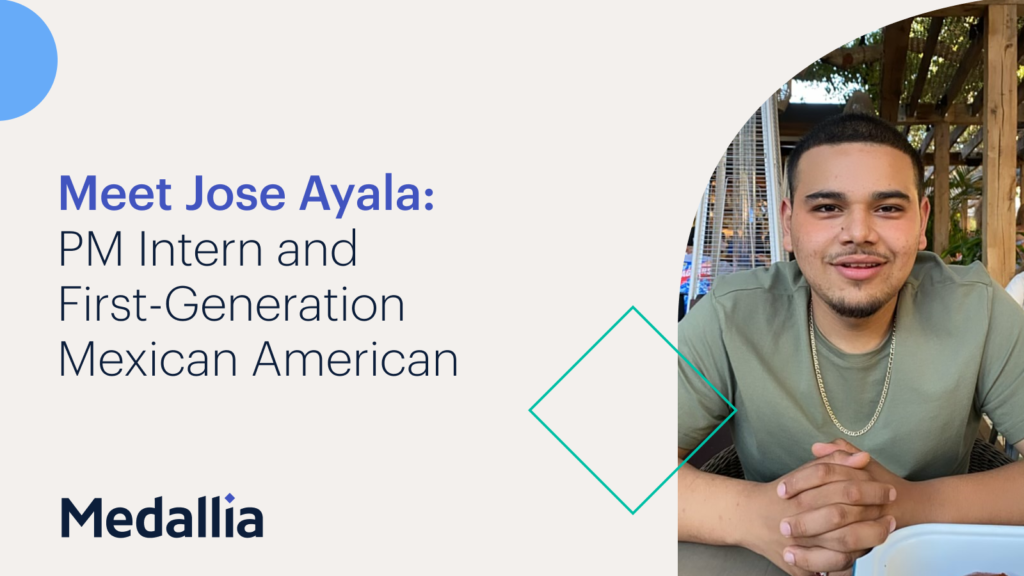We empower women Medallians year round. This month in particular we highlight some of the outstanding women and women-led ERGs that impact Medallia.
If you frequent our Medallia culture blog, by now you know that one of our mottos is “we hire the whole person,” and we enable Medallians to bring their whole selves to work. But what exactly does that mean, bring your whole self to work?
This statement hits differently for different people who hold marginalized or minority identities. Too often, these individuals feel a need to cover, or to downplay different aspects of who they are in order to blend in with the majority group. So, how does Medallia create an environment that is intersectional, welcoming and equitable for all? We do this by listening, empowering our people through Employee Resource Groups, holding town halls and training to promote dialogue and education on important topics, and uplifting the voices of those who often are overlooked in our society. Like activist Malala Yousafzai once said, “We cannot all succeed when half of us are held back.”
We empower women Medallians year round. This month in particular we wanted to share and highlight some of the outstanding women and women-led ERGs that impact Medallia on the daily.
Meet Two of our ERGs

WIT
WIT’s (Women In Tech) mission is to support and connect women in tech at Medallia to each other and with the broader community. They support recruiting, and they engage with youth and share knowledge through events, conferences and volunteering. They also empower our members by providing grant opportunities to explore further education for career growth.
Most recently, WIT impacted other women Medallians by giving away educational grants to other members of WIT! With the goal of encouraging continuous education and sharing back to the larger community, women in the CTO and Product Management orgs at Medallia were awarded with small grants to support their learning and development. This is just one of the many ways WIT has and continues to provide equity and opportunity for women in tech.

Women@
FY21 ended with a bang for the Women@ ERG! They took part in an insightful Women in Leadership session with Sharon Schrank, VP of Marketing for Old Navy, and our own Gwendolyn Radsch, Director of Customer Success. They discussed how they built their careers while also their respective brands and how they navigated professional challenges to secure leadership roles within their organizations.
They also know how important self-care and relaxation is. Through internal fun community events, Women@ hosted virtual get-togethers, such as breaking bread in a cooking class and making their own wine!
In the past year, Medallian Women in Tel Aviv, London, Argentina and Australia have all impacted education and change through town hall speakers and community engagements.
“We are excited to discover the issues and causes that are top of mind within the Women@ community this year, and are grateful for the resources Medallia provides to allow us to support those causes both with our time via volunteer time off as well as our ERG budget and matching donations!” said Inez Cavallaro, Mid-Market Sales Director.
Meet the Medallians
Get to know a few members as they share with us what motivates them, the mottos they live by and more. You can also check out our Instagram @Medallialife, where all month long we are highlighting some amazing Medallian women for Women’s History Month.
 Neira Hodzic, Sales Director
Neira Hodzic, Sales Director
What is your why? What or who motivates and inspires you?
It sounds cliché, but to make my parents proud. I left Bosnia when I was 5 due to the civil war. I was a refugee for years. I moved many times and learned two languages by total immersion in new countries. Sure, I didn’t have it easy, but my parents are the ones who sacrificed everything. And they did it all for their kids. So, I very much have an underlying drive to show them it was worth it — that I’m more than OK. I’m happy, I’m successful and someone they can be proud of.
 Genil Washington, Global Director, Talent Acquisition Operations
Genil Washington, Global Director, Talent Acquisition Operations
What energizes you around your career?
I love the constant ability to learn and develop innovative approaches to find and hire talent. The most invigorating part of my role is supporting people to land their dream job and then watching them blossom in the career path I helped place them on. Wow, it’s just awesome to watch.
 Julie Li, Sr. Director, People Programs
Julie Li, Sr. Director, People Programs
What are you passionate about? Do you live by a motto?
I’m passionate about helping people bring out their authentic selves, recognize their unique strengths and find ways to leverage their strengths in their work. I’m also passionate about using storytelling to foster closer human connections and greater mutual understanding. The more empathy we have for each other, the better we will be able to communicate and collaborate together, and the more trusting the relationship. I love helping to build the bridges of trust and understanding among different groups of people and moving everyone toward shared goals.
 Wendi Odenhausen, Director, Strategic Accounts
Wendi Odenhausen, Director, Strategic Accounts
What is your why? What or who motivates and inspires you?
I have a couple of different “whys,” and, honestly, depending on what is going on in my life, what is happening in the world, the “why” driving me from day to day can change. But overarching, my why is to show myself that I am strong and to provide the inspiration to my children that they, too, are strong and can do great things. I have three sons and a daughter, and this is definitely my biggest why. I want them to grow up to be strong and do great things.
What’s something you’d like to share with other women?
I’ve had the privilege to have traveled extensively, becoming an immigrant twice and living in countries for significant times where I did not speak the language fluently. While I am exactly where I should be now, this experience has absolutely shaped me and given me the perspective and peace to be comfortable with being uncomfortable. It’s an amazing strength to have, and doesn’t come from living abroad or being in a constant state of flux. But if I could pass one thing on, particularly to women, it is not to be afraid to do things that are hard, that seem scary even, and to trust your strength and resilience. This is how we grow, and this is how we get stronger. And it’s an amazing feeling.
 Tey Scott, Vice President, Global Talent Acquisition
Tey Scott, Vice President, Global Talent Acquisition
What is your why? What or who motivates and inspires you?
The story of who I am is deeply ingrained in what I do. I was adopted from El Salvador when I was almost 4 years old, and I feel I honor my ancestors by becoming the very best version of myself possible. I was given a golden ticket to come to the US and be whatever I could imagine for myself. By creating my own legacy, I show my daughter that anything is possible and, with that, create generational abundance. This is truly a gift.
Are you a part of an ERG? What does it mean for you?
I belong to BAM and LatinX. I am super passionate about “normalizing” the tech workforce by hiring from a wide swath of skills, experiences and backgrounds. Like many, I have a very diverse family, so I am deeply interested in all things that lead to fairness and equity. I feel the ERGs help us stay true to our intentions. I think they are a huge part of our culture at Medallia.
 Sandra Roach, Head of Employee Experience Delivery Practice
Sandra Roach, Head of Employee Experience Delivery Practice
What is your why? What or who motivates and inspires you?
I was raised by a single mother who worked her tail off every day to ensure my brother and I had a roof over our heads and food on the table. I’ve been following in her footsteps and working my tail off ever since I was able to do so as well, putting myself through college and grad school and working my way through a career I never could have imagined. I am so thankful to have been surrounded by so many strong and confident women over the years, many of whom will be lifelong mentors, who continue to push me out of my comfort zone and constantly evolve on this journey. My hope is that my daughter ends up with the same work ethic that can truly drive change and the mindset to be a lifelong learner.
Medallia is growing and dedicated to “hiring the whole person.” Join the #MedalliaLife by heading to our careers page and applying to one of our open positions today!
Plus, be sure to follow Medallia Life on Instagram and Twitter for an inside look at our culture, for updates about openings, and more.







 Wendi Odenhausen, Director, Strategic Accounts
Wendi Odenhausen, Director, Strategic Accounts






